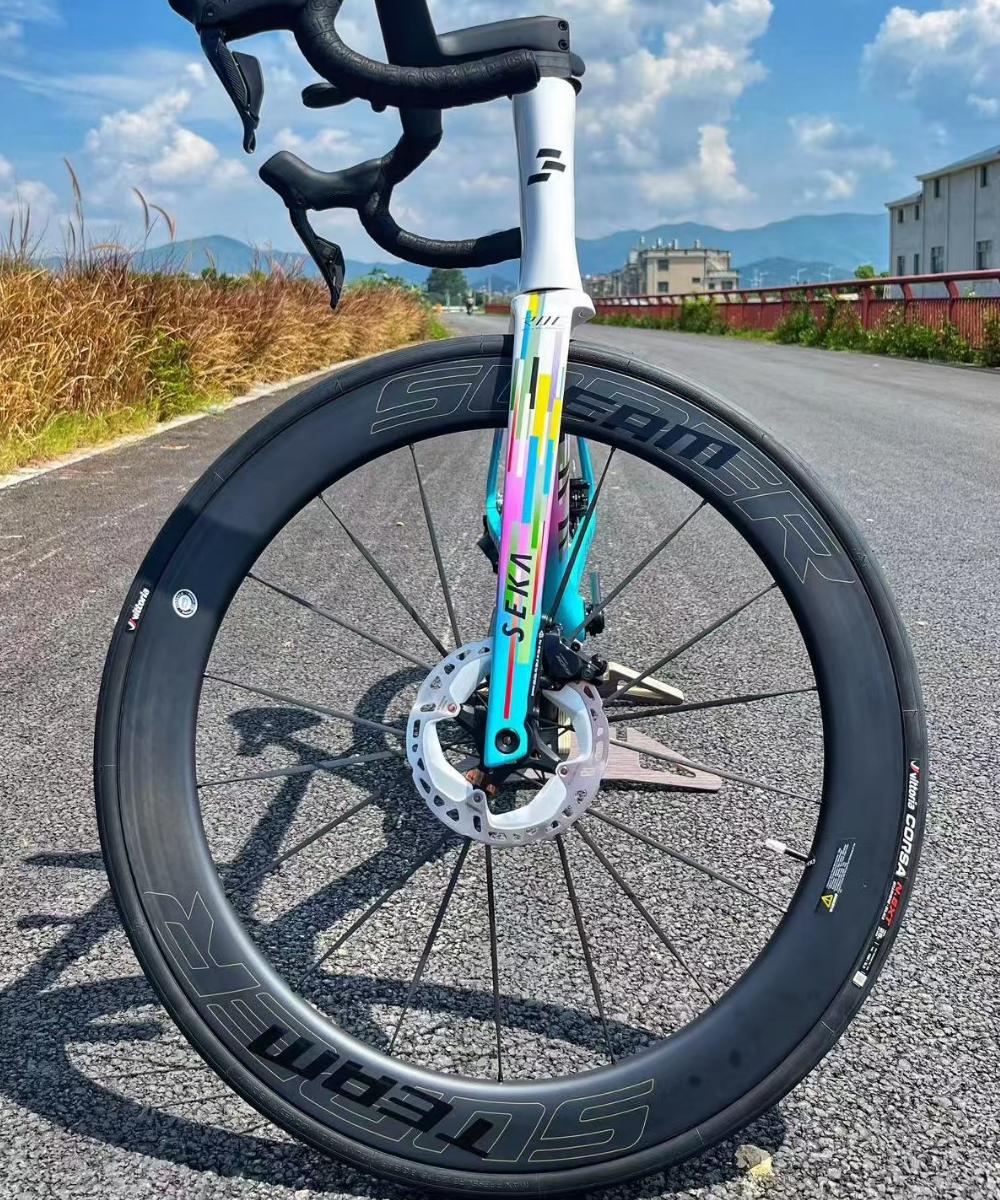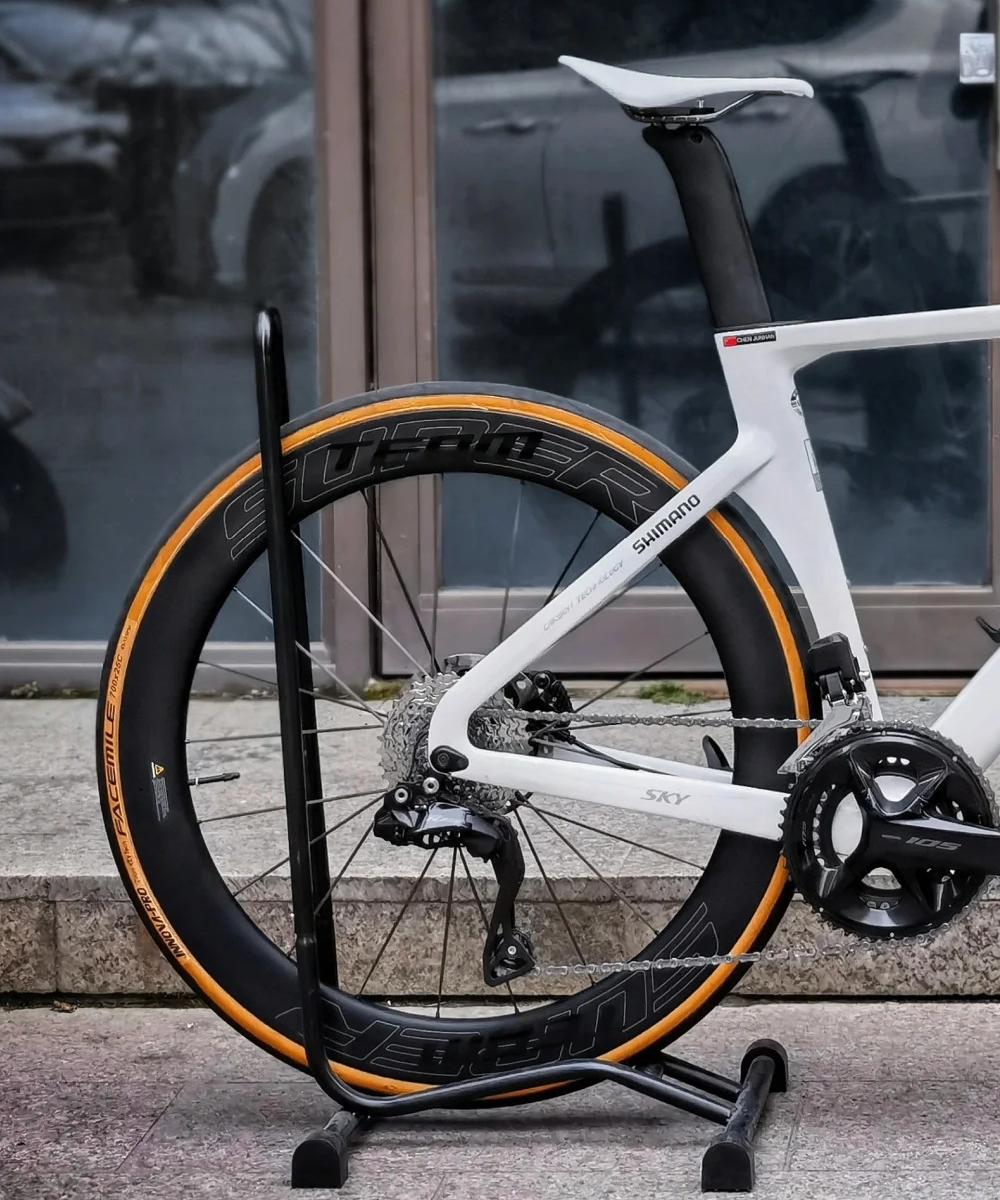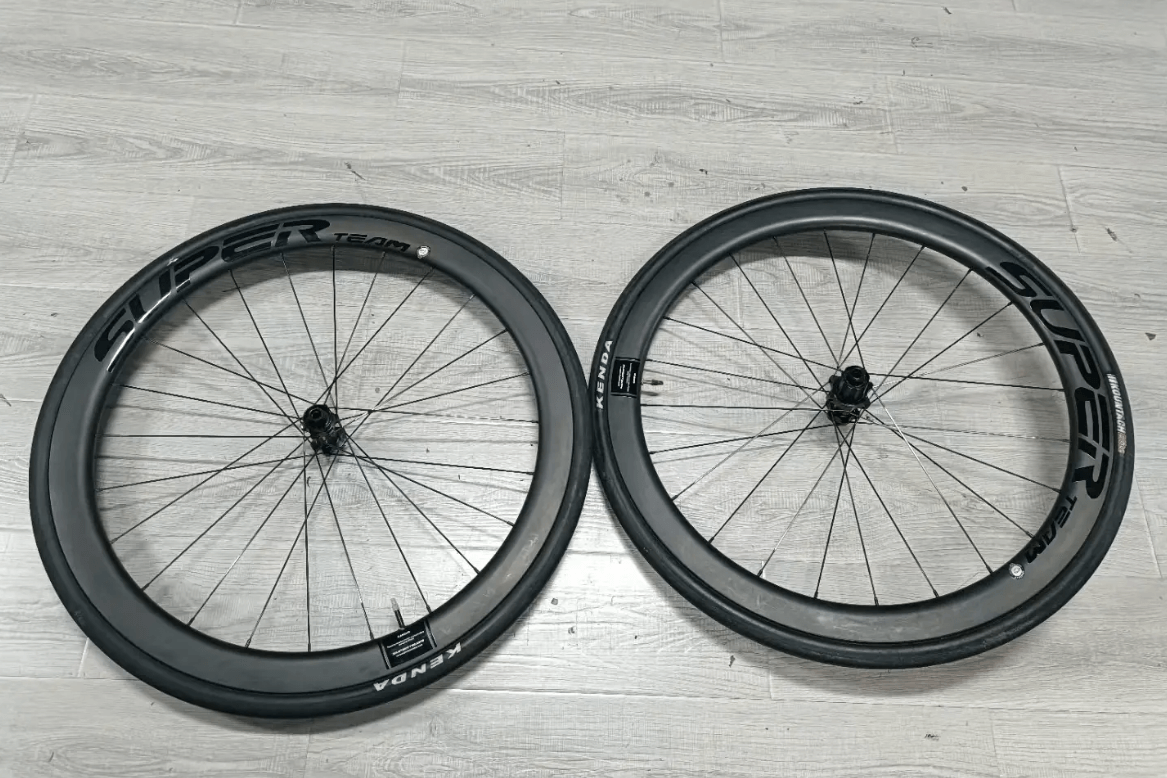If you’ve been closely following bicycle technology, you can already sense that a major shift is on the horizon. This list of predictions, insights, and trends for 2026 cycling tech is well worth your attention.
These forecasts begin with AI features transitioning from computers to real-world riding. TPU inner tubes are set to dominate, as are climbing bikes. Hooked rims will become mainstream again by 2026, and Shimano’s new 13-speed wireless drivetrain is expected to make headlines. Foreign media also predict that 2026 will be the year when riders finally embrace spacers under their stems. Let’s dive into the details!
AI Will Penetrate Every Aspect of Cycling
It started with electronic shifting systems that needed charging, then came rechargeable pumps. What’s next? Probably smart sunglasses that need to be charged as well.
Some brands have already combined sports cameras, built-in speakers, and high-quality lenses into a single device. That’s impressive on its own, but the addition of AI-powered features truly takes it to the next level.
These new AI functions let you control music playback, send messages, identify objects in your view, and check weather information — all without taking out your phone.
New Shimano Dura-Ace and Ultegra Drivetrains — And They’ll Be Wireless

In 2026, we may finally see Shimano release updated Dura-Ace and Ultegra drivetrains. Unlike Shimano’s typically conservative approach, experts speculate this generation will bring major changes to counter SRAM’s growing dominance, Campagnolo’s recent innovations, and the rise of more cost-effective alternatives.
The biggest change could be a fully wireless system — though it’s unclear how Shimano will implement it. Because SRAM’s detailed wireless patents forced Campagnolo to equip its Super Record Wireless groupset with separate batteries for each derailleur, it wouldn’t be surprising if Shimano had to take a similar route.
Will Shimano move to 13-speed?
Not necessarily. Historically, Shimano has only added an extra sprocket every other generation:
Dura-Ace 7800/7900 → 10-speed
Dura-Ace 9000/R9100 → 11-speed
Dura-Ace R9200 → 12-speed
However, given that a 13-speed cassette appeared in Shimano’s recent patent filings, the possibility can’t be ruled out.
Expect the popular 11-34T cassette to remain, but there’s potential for an 11-36T option at the Dura-Ace level. If 10-30T and 10-34T cassettes aimed at pro riders appear — offering wider sprint ratios — that would also make sense. For now, all of this remains educated speculation.
2026: The Year of the Climbing Bike?

2025 has been the year of the aero road bike, yet a surprising number of lightweight climbing bikes have recently entered the market. Does this signal that 2026 will become the year of the climbers?
Recent models such as the Specialized Aethos, Scott Addict RC, and Cervélo R5 have all made strong impressions. These bikes don’t just ride beautifully — they offer something few others can: exceptional low weight.
Specialized revealed that the ultra-light Aethos was made possible through Finite Element Analysis (FEA), which not only studies stress distribution and stiffness virtually, but also shows how each carbon fiber layer affects those properties. This allowed Specialized to increase tire clearance and head tube height without significantly changing frame or fork weight.
That said, these weight-optimization practices may also spark the development of lighter aero bikes and improve all-road and endurance bike designs.
TPU Inner Tubes Will Replace Tubeless Systems

Most modern road cyclists are either already riding tubeless setups or considering switching. However, 2026 might be the year when even tubeless purists start adopting TPU (thermoplastic polyurethane) inner tubes.
TPU tubes offer several of the same advantages as tubeless systems, particularly when compared with standard butyl rubber tubes: they’re lighter, more puncture-resistant, and have lower rolling resistance. In recent years, tubeless setups have become nearly ubiquitous, but the compact and ultra-light form factor of TPU tubes means they’ve already replaced rubber tubes for many riders.
So why switch from tubeless? For some, tubeless systems and their sealant maintenance can be messy and expensive — especially at higher tire pressures. The latest TPU tubes claim nearly the same efficiency as tubeless, yet they’re much easier to install. For riders tired of dealing with messy sealant or bead seating issues, that’s a major win.
Hookless Rims May Reach Their End — 2026 Will Be the Year of Hooked Rims

S-ALL Carbon Ultra H2 D30-50 Disc Brake Special Edition
Hookless carbon rims may begin to fade from the spotlight in 2025 — though not vanish entirely. Over the past few years, hookless designs have gained traction for being lighter, stronger, and cheaper to produce. However, the transition has been far from smooth. Compatibility issues and safety concerns at the professional level have only deepened skepticism among riders.
As a result, 2026 is shaping up to be the comeback year for traditional hooked rims.
Pro Riders Will Learn to Love Spacers — And You Might Too

That pro rider lifting his bars sky-high might be chasing more than just marginal gains — the benefits could be substantial.
In the next five to ten years, you might walk into your local bike shop and find stock setups with noticeably taller front ends. Such a position may seem unconventional, but it offers real comfort and aerodynamic advantages for certain riding styles.
Traditional frame geometry assumes handlebars fall within a specific zone. Pushing them far outside that range can alter handling dramatically. Yet, more riders — both pro and amateur — are experimenting with adding stem spacers to raise the bars slightly, creating a position where the forearms are parallel to the ground. This can deliver a more comfortable and sustainable aero position without sacrificing power.
In a sport obsessed with marginal gains, reducing frontal area to this degree is anything but “marginal.” At racing speeds, it can save tens of watts, while riders often argue over frame designs that save only two or three.
The Era of Short Cranks Has Arrived — And It’s Here to Stay
In their 2025 forecasts, cycling media predicted a shift toward shorter crank arms, and that prediction proved accurate.
Tadej Pogačar dominated multiple races this year using 165 mm cranks. Studies suggest that a crank length equal to about 41% of tibia length may be optimal. While most cyclists can adapt to different lengths, professionals chasing marginal gains benefit from finding the ideal setup.
For everyday riders, shorter cranks don’t significantly change power output, but they reduce hip angle at the top of the pedal stroke, leading to better comfort and endurance. That’s why 2026 will likely see even more riders switching to shorter crank arms — not for speed, but for comfort.
We’re already seeing 165 mm cranks spec’d on smaller bikes, and as manufacturers clear existing stock, shorter crank options will appear across more models.
Key Takeaway:
2026 won’t necessarily be revolutionary, but it will be a year of meaningful refinement — with AI-driven gear, wireless drivetrains, lightweight climbing frames, practical TPU tubes, the return of hooked rims, and rider-first ergonomics defining the next era of cycling.






Leave a comment
All comments are moderated before being published.
Este site está protegido pela Política de privacidade da hCaptcha e da hCaptcha e aplicam-se os Termos de serviço das mesmas.